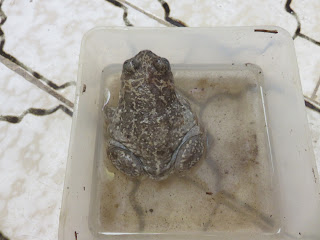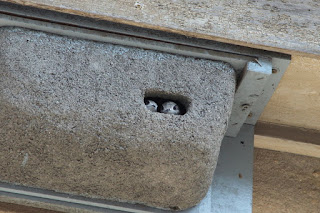Save Sheffield's Trees
The endangered trees of Sheffield are a big concern for me, and a growing number of people from all walks of life. Not just local residents, but celebrities, such as Bianca Jagger and Jarvis Cocker, have joined the campaign to save the trees. Even Michael Gove, who is Secretary of State for Environment, Food and Rural Affairs, spoke out and accused Sheffield City Council of committing “environmental vandalism.”
What is happening in Sheffield, where thousands of trees have been felled, is bad enough but it is happening in many other UK cities too. Cardiff, Swansea, Liverpool, Birmingham, Bristol, Brighton, and London, are some of the ones I have heard of where trees are being so needlessly felled. I keep hearing of more places where trees are under threat or have been destroyed. A report in The Guardian, states that, over the last three years, as many as 8,414 trees were felled in Newcastle, 4,778 were removed in the county of Wiltshire, and a massive 4,435 got the chop in Edinburgh. The more I have got involved in the battle to save Britain’s city street trees, the more I have found out, and the more concerned I have become.
As it is, I often worry about what is happening to the countryside and wildlife of the UK. I keep reading of the declining numbers of so many species of flora and fauna, and sadly it doesn’t surprise me. The habitats animals and plants need are rapidly being destroyed. Among these habitats are forests, and now city trees are in danger too, and many have already been lost. City trees provide homes for wildlife, nesting and roosting places for birds, food for caterpillars of moths and butterflies, and nectar for bees. City trees help to clean the air, as well as providing the natural beauty of their greenery.
White Letter Hairstreak (Photo: Public Domain)
In Sheffield, there was the threat to a surviving elm tree and an entire colony of the endangered white letter hairstreak it supports. This little butterfly has caterpillars that can only feed on elms. After much protest about this potential eco-crime, there was even talk of relocation efforts and a scheme in which butterfly eggs were going to be looked for an moved to other elms. I was not alone in not having much faith in this plan working.
So why is this destruction of British trees happening? Making money and saving money appears to be the answer. Development companies make money by destroying what is there and putting something new in its place. Corrupt city councils save money by not having to pay for the maintenance of established trees. It is much easier to maintain a road with no trees or few trees than one with lines of mature trees. It is much easier to say trees are being replaced, and then plant some saplings, many of which will actually die. It is easy for city councillors to say they care about the health of residents and that they want to see a green city and improve air quality for the future, but then take actions which betray their words, which are just political lies.
The story of Sheffield’s trees is a tragic one. Its main players are Labour councillors and Amey plc versus campaigners who are doing all they can to stop mature and healthy trees from being killed and removed. Police and security forces have been called in to enable the tree killers from Amey to be able to get on with their destructive work. Bizarre but true news stories have been reported, for example, of over 30 police on duty to enable one tree to be chopped down. The situation has become so crazy it is almost unbelievable, almost surreal. A woman protester was arrested for playing a toy trumpet and a priest for playing a tambourine! Campaigners, who are the true heroes and heroines when it comes to the plight of Sheffield’s trees and efforts to save them, are treated as criminals and ending up in court, while the true crooks walk free.
The public have been lied to by politicians that claim to care about their communities, and many people have learned from this that Labour councillors they voted for did not live up to their image, and were no better than their Tory counterparts after all.
The tree-felling in Sheffield has got worse and worse with respect to how the public have been treated. It has got so bad that not only are protesters being arrested on nonsensical charges by heavy-handed police but operations to fell the trees are being carried out under cover of darkness and several trees have already been killed this way.
Save Roath Trees
Save Roath Trees Sign (Photo: Steve Andrews)
It was in Cardiff that I first got involved when I went along to the parks in Roath where trees along Roath Brook had been felled or marked for future felling. Here it was not Amey plc to blame for the destruction but Natural Resources Wales, that had approved a flood defense scheme, even though there had been no flooding. Residents were rightly annoyed and saddened to see trees that provided part of the beauty of the park, and homes for wildlife, being callously marked as targets for removal. Roath Brook supports all sorts of wildlife, including kingfishers, and there have been reports of the endangered water vole living here too.
This haven for wildlife is not far from bustling city streets and should surely be looked after and treasured? Removing a large number of its varied tree species can only damage the site. To find that an organisation, supposedly in charge of looking after the Welsh environment was backing this eco-vandalism is shocking. But perhaps not if we think about what the word “Resources” means to these people. To my mind, this is where a great deal of the world’s problems have their source. The natural world is so often viewed as “resources”, that can be bought and sold, resources that can be used or abused by people, who so arrogantly think themselves superior to nature, not part of it and dependent on it.
Disappearing Trees of Roath (Photo: Steve Andrews)
Fortunately, the ‘work’ in Cardiff has been put on temporary hold, but it is by no means a victory for campaigners yet, and elsewhere in the city other trees and wildlife habitats are under threat. Redrow plc/Redrow Homes is a housing construction company that have started work on the Plasdwr development project, covered in another of my blogs. Campaigners in Liverpool are hoping to stop this company from destroying trees and parkland at Harthill and Calderstones Park.
Redrow Danger Sign (Photo: Steve Andrews)
I actually had a tweet from someone at Redrow after I had been talking about these matters at Twitter: "Hi Steve. We are translocating existing hedgerows as well as planting new native trees at our PlasDwr development. We are currently developing a new biodiversity strategy which focuses on ensuring net gains for biodiversity on our developments. Kind regards, Nicola" My response to this was asking how can destroying established trees help ensure biodiversity when it destroys existing habitats and species that depend on them, and pointing out new trees take a long time to grow to the size of those replaced. It remains unanswered.
Stand By Tree
Singing and standing by Tree
So what can we do to help save our trees? My answer, as a singer-songwriter and performer was to sing about it. I changed the lyrics of Stand By Me to “Stand By Tree,” and “All we are saying is give peace a chance” to “All we are saying is give TREES a chance.” And also I have changed the lyrics to "Everybody's talking 'bout Jarvis Cocker, he's a rocker, celebrities, saving trees. All we are saying..."
I have been active on social media reporting on the subject of the protest campaigns to save the trees of the UK. I was made into a poster-boy for the campaigns and was interviewed by Jonathan Downes for his GONZO Weekly too.
Other activists have held public demonstrations or put themselves in the way of the tree-fellers. Many have signed petitions, and like myself, used the social media and news-media to have their say. Some brave but unlucky protesters, including poet, singer and musician Benoit Benz Compin, have found themselves under arrest. But we must carry on doing whatever we can.
I am writing a new song and it contains the lines:
"Who will stop the destruction of so many trees?
Who will save the birds, the butterflies, and bees?
It comes down to the protesters,
To campaigners, like you and I,
We cannot let them kill our world,
We cannot let it die."
Who will save the birds, the butterflies, and bees?
It comes down to the protesters,
To campaigners, like you and I,
We cannot let them kill our world,
We cannot let it die."






























